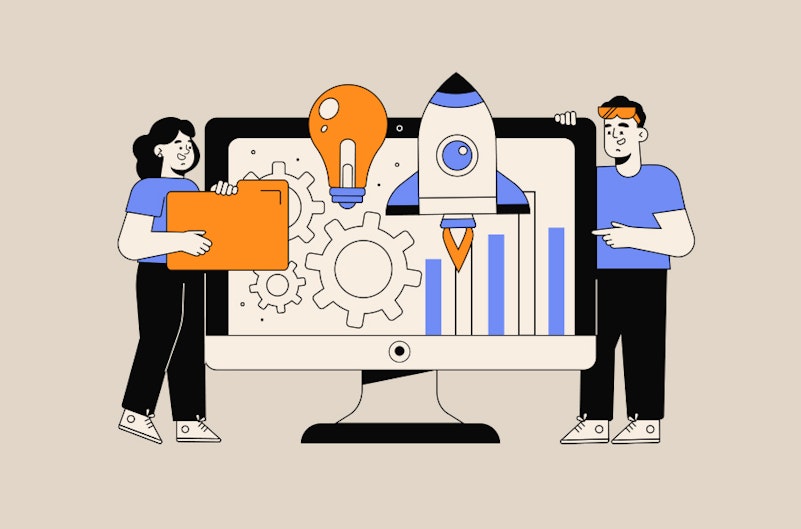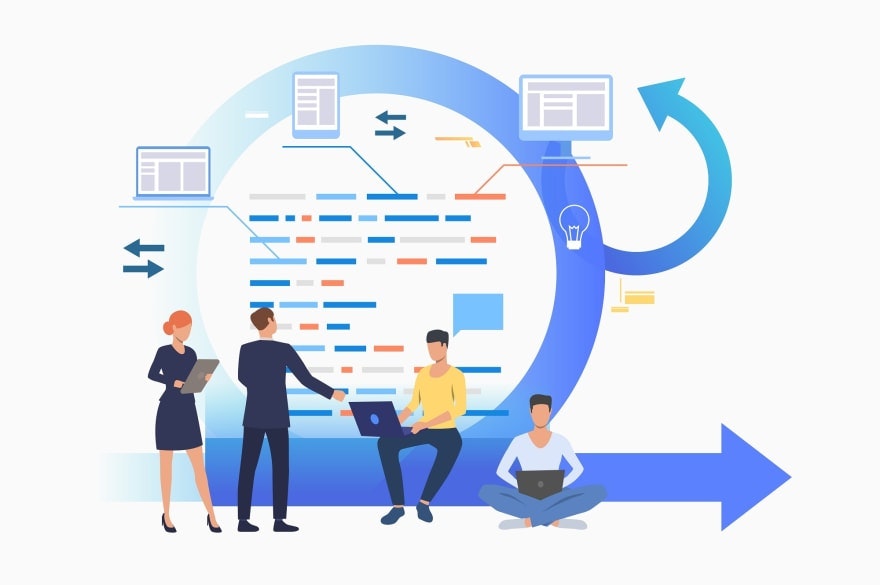MVP UX: Designing for Maximum Impact with Minimum Resources
As a UX designer, you're often faced with the challenge of creating new products or features under tight constraints. Limited budgets and pressing deadlines are common hurdles. This is where the concept of MVP UX comes into play. It's a powerful approach that allows you to test and refine your ideas efficiently.
What is MVP UX?
MVP UX stands for Minimum Viable Product User Experience. It's an approach that focuses on designing the core features that solve your users' most critical problems. By prioritizing essential functionalities, you can quickly launch a product that delivers value while conserving resources.
Why MVP UX Matters
In the fast-paced world of product development, testing assumptions as early as possible is crucial. MVP UX allows you to:
1. Validate your ideas quickly
2. Gather real user feedback
3. Minimize wasted resources
4. Accelerate your time to market
Designing for MVP UX

When creating an MVP, your goal is to build a minimal feature set that users would find valuable. Here's how to approach it:
1. Identify core user needs: Focus on solving the most pressing pain points for your target audience.
2. Prioritize ruthlessly: Choose features that deliver the highest value with the least effort.
3. Keep it simple: Design clean, intuitive interfaces that don't overwhelm users.
4. Plan for iteration: Create a flexible design that can easily evolve based on user feedback.
Benefits of MVP UX
By adopting an MVP UX approach, you can:
Save time and money: Avoid wasting resources on unnecessary features.
Learn faster: Gather real-world data to inform your design decisions.
Reduce risk: Test your product's viability before investing heavily.
Balancing Quality and Speed
While MVP UX emphasizes speed, it doesn't mean sacrificing quality. Your goal is to create a product that's both functional and enjoyable to use. Here are some tips:
Focus on core interactions: Ensure the primary user flows are smooth and intuitive.
Maintain consistency: Use a cohesive design language throughout your MVP.
Prioritize usability: Conduct quick usability tests to catch major issues.
The Crucial Role of User Experience (UX) in MVP Development

Creating a successful MVP isn't just about building features. It's about crafting an experience that resonates with your users. Here's why UX is essential in MVP development:
Addressing Real User Needs
Did you know that over 40% of startups fail due to a lack of market need? This statistic from Statista highlights the importance of aligning your MVP with genuine user requirements. Your MVP should:
Focus on core functionalities that solve real problems
Demonstrate a clear understanding of user expectations
Provide a smooth, intuitive experience from the start
Making a Strong First Impression
Your MVP is often your first chance to win over users. A well-designed UX can:
Showcase your product's value quickly
Encourage users to explore further
Build trust and credibility for your brand
Streamlining User Journeys
As an UX designer, you play a key role in mapping out how users interact with your MVP. This involves:
Identifying pain points: Understand where users struggle in their current workflows.
Simplifying processes: Design intuitive paths to solve user problems.
Eliminating friction: Remove unnecessary steps or confusing elements.
Gathering Valuable Insights
UX design in MVP development is an iterative process. By incorporating UX principles early, you can:
Collect meaningful user feedback
Identify unexpected user behaviors
Refine your product vision based on real data
Pre-MVP Testing
Consider using pre-MVP prototypes to:
Test initial concepts with users
Gather early feedback on your ideas
Refine your user journey maps before full development
Balancing Features and Usability
While your MVP should focus on core features, don't neglect usability. A well-designed UX ensures that:
Users can easily navigate your product
Key features are discoverable and accessible
The overall experience feels polished, even with limited functionality
Adapting to User Feedback
As you gather insights from your MVP, be prepared to:
Adjust your user journey maps
Refine or reprioritize features
Continuously improve the UX based on real user data
By prioritizing UX in your MVP development, you're setting the foundation for a product that truly meets user needs and has the potential for long-term success. For more details on building an effective MVP, check out how to build MVP effectively.
How to Design an MVP with User Experience in Mind: 7 Key Steps

Creating an MVP with strong UX principles requires a structured approach. Let's break down the essential steps:
1. Conduct thorough Market Research
Before diving into design, you need to understand your audience and competition. Here's how:
Analyze your core audience's needs
Study your competitors' UX solutions
Conduct detailed interviews and online surveys
Use tools like UXtweak to automate research for teams of all sizes
2. Define Your Product's Values
Create a PRD or Product Requirements Document to align your team. Include:
The problem statement
User personas and stories
Success metrics
Assumptions and constraints
3. Create the UI/UX Design
Focus on essential functionality and organize your content effectively:
Develop your information architecture
Define and prioritize your product's content
Use resources like Mobbin for UX pattern inspiration
4. Design MVP Features
Prioritize features based on user needs:
Categorize features as high, medium, or low priority
Focus on delivering core value to users
5. Create an Optimized User Flow
Visualize the user journey from start to finish:
Create user flow diagrams
Identify key stages in the user process
Ensure a smooth path to completing primary tasks
6. Implement Pre-launch Testing
Gather valuable feedback before your full launch:
Use moderated testing for qualitative insights
Employ unmoderated testing for quantitative data
Conduct online user interviews for personal feedback
7. Launch Your MVP
Before release, ensure your MVP:
Has a natural user flow
Covers all use cases
Is free of major bugs
Aligns with your initial product concept
Remember, while an MVP is a simplified version of your final product, it should still offer a high-quality user experience.
By following these steps, you'll create an MVP that not only validates your idea but also provides a solid foundation for future development based on real user feedback.
Conclusion: Embracing MVP UX for Success
Designing a Minimum Viable Product (MVP) with a focus on UX is more than just a best practice—it's a strategic advantage. By prioritizing user experience from the start, you're setting the stage for a product that resonates with your audience and stands out in the market.
Remember, an MVP isn't about cutting corners. It's about smart prioritization and iterative improvement. Your initial release should still deliver a smooth, intuitive experience that solves real user problems.
As you embark on your MVP journey, consider the value of expert guidance. At Adam Fard UX Agency, we specialize in blending cutting-edge AI with human-centered UX design to create MVPs that truly connect with users. Ready to take your product idea to the next level? Let's work together to build an MVP that wows your users and drives your business forward. Contact us today to get started.
By focusing on MVP UX, you're not just building a product—you're crafting an experience that can grow and evolve with your users' needs. Start small, learn fast, and watch your vision come to life.
FAQ’s
1. What's an MVP in UX?
In layman’s terms, an MVP in UX is your product's first draft. It's a bare-bones version that solves your users' main problem. You build it quickly, show it to users, and improve it based on their feedback. This cycle repeats until you have a solid product that users love.
2. How does MVP fit into design thinking?
In design thinking, an MVP is your idea come to life - but stripped down to the basics. It's the simplest version of your product that still delivers value. Think of it as a test run to see if your idea actually solves a real problem for real people.
3. How do you create an MVP in UX design?
To create a great MVP, start with solid research. Know your users inside out. Focus on solving their biggest problem first. Build something that works well, even if it's simple. Then, listen to your users and be ready to change things based on their feedback.
4. What's the point of an MVP in product design?
An MVP in product design is like a sneak peek of your full product. It has just enough features to attract early users and prove your idea works. It helps you gather real-world feedback fast, so you can improve your product before investing too much time and money.
5. What are the steps to build an MVP?
Building an MVP is a journey. Start by pinpointing your ideal customer. Figure out what makes your product special. Set a budget and timeline. Then, create your MVP and share it with early users. Listen to their feedback carefully. Based on what you learn, decide whether to keep improving, start over, or move on to something new.





